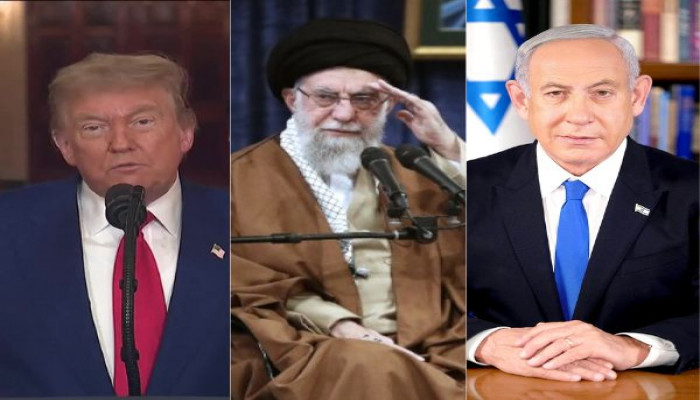- Jul 29, 2025
- Myind Staff
Featured Articles
PM Modi slams Congress for aligning with Pakistani propaganda, says ‘no single leader asked India to stop Operation Sindoor’
A heated discussion took shape in the Parliament over Operation Sindoor, as the ruling government and the opposition confronted each other over the four-day military confrontation between India and Pakistan that took place in May. Prime Minister Narendra Modi made a strong statement, saying, "No other country intervened and stopped India from carrying out the strikes on terror camps in Pakistan." He said India halted its operations only after completing "100% of its objectives," and issued a warning that any provocation from Pakistan in the future would receive a firm response. He also criticised the Congress party for aligning with what he described as Pakistani propaganda. Prime Minister Narendra Modi told the Lok Sabha that Operation Sindoor would continue and said it served as a warning to Pakistan that India would not stop until Pakistan ends terror attacks. He said, "Operation Sindoor will continue, it is a notice to Pakistan that India will always act till Pak stops terror attacks." He also said the Congress party was uncomfortable with India's growing influence across the world. He remarked, "What is sad and surprising is that those who consider themselves tall leaders of Congress are rattled by the fact that why India's perspective was presented before the world. Perhaps a few leaders have been prohibited from speaking in the House." While addressing the House, PM Modi criticised the Indus Water Treaty and blamed former Prime Minister Nehru for what he called a major mistake. He said Nehru’s decision ignored the interests of Indian farmers and called it "Nehru's biggest blunder." He stated, "Successive governments did not correct Nehru's mistake of Indus Water Treaty, but we made it clear that blood, water cannot flow together." He also said, "Congress sacrificed country's security for their politics of appeasement and vote bank." He accused Congress of compromising national security and brought up the issue of Pakistan-occupied Kashmir. He said, "Congress has always compromised on national security. Those who are asking today why PoK was not taken back should first answer whose government allowed Pakistan to capture PoK. The answer is clear. Whenever I mention Nehru ji, Congress and its ecosystem get rattled... 'Lamhon ne khata ki, sadiyon ne saza paayi'. To date, the country is suffering the punishment of all the decisions that were taken since independence." He further criticised the Indus Waters Treaty again and said, "It has been a long-standing habit of the Congress to mortgage India's interests. The biggest example of this is the Indus Waters Treaty, signed by Pandit Nehru. Those rivers are part of India’s civilisational identity, our very roots are connected to them. Pandit Nehru agreed to give 80% of India’s water to Pakistan. Can anyone explain the mindset behind such a decision? We were left with only 20% of the Indus River system. They gave 80% to a country that openly calls itself India’s enemy." Referring to the current situation, he said India had put an end to one-sided peace talks and terrorism. He said, "We have shut down the one-way traffic allowing both 'Aman ki Asha' and terrorism." He shared that on the night of 9 May, he couldn’t take a call from the US Vice President because he was in a meeting with the army. He said, "No leader in the world told India to stop its operation. On the night of 9th May, the Vice President of America tried to talk to me. He tried for an hour, but I was in a meeting with my army, so I could not pick up his call. Later, I called him back. The Vice President of America told me on the phone that Pakistan is going to launch a big attack. My answer was that if Pakistan has this intention, it will cost them a lot. If Pakistan attacks, we will respond by launching a big attack. This was my answer." He also spoke about the success of Operation Mahadev, saying, "Yesterday, our security forces brought the attackers of Pahalgam to justice by conducting Operation Mahadev." He accused Congress of siding with Pakistan and showing disrespect to the armed forces. He said, "Opposing the armed forces, negativity for the armed forces has been the old attitude of Congress. Pull up all of Pakistan’s statements and the statements of those who are opposing us here, they are the same with full stop and comma. The country is surprised that Congress has given a clean chit to Pakistan. They dare to ask for proof that the Pahalgam attackers were from Pakistan." He also responded to a controversial remark in Parliament, saying, "She was made to say that Operation Sindoor was a 'tamasha'. This is like putting acid (on the wounds) of the 26 people killed by terrorists." PM Modi said Congress had taken positions that echoed Pakistan’s demands and questioned their intentions. He said, "On one hand, India is moving ahead at a fast pace towards self-reliance, but Congress is becoming dependent on Pakistan for issues. Unfortunately, Congress is importing issues from Pakistan. The country is surprised that Congress has given a clean chit to Pakistan. They are saying that the terrorists of Pahalgam were from Pakistan. Give us proof of this. Pakistan is also demanding the same thing that Congress is making." He confirmed that Operation Sindoor was still active and warned Pakistan of serious consequences in the event of any provocation. He said, "To those asking why Operation Sindoor was stopped, I say -- it hasn’t stopped. If Pakistan dares to provoke us even slightly, they will face the consequences." PM Modi also shared a behind-the-scenes detail of his conversation with the US Vice President, saying, "If Pakistan has such intentions, it will cost them dearly. If they fire bullets, we will respond with bombs." He said this exchange happened on the night of 9 May and by the next morning, India had significantly weakened Pakistan’s military capabilities. He revealed that Pakistan asked for a ceasefire on the night of 10 May. He said, "They said, 'Bahut maara, ab jyada maar jhelne ki takat nahi hai,' and requested us to stop the war." He made it clear that no other country asked India to stop the operation and said, "Not a single world leader asked us to stop. Our actions were precise and non-escalatory, just as we had committed." He further said that India had achieved complete success in its mission and delivered its message to the Pakistan Army within minutes. He highlighted that the objectives were met with full clarity and precision. He pointed out that only three countries supported Pakistan during Operation Sindoor and said that 190 other nations stood with India. He criticised Congress for playing politics even during such a critical moment and said the party showed a lack of responsibility during a national crisis. PM Modi also said Operation Sindoor demonstrated India's strength and self-reliance to the world. He said that India’s use of indigenous drones and missiles proved how far the country had progressed and exposed Pakistan's military weaknesses. He told the House that many Pakistani airbases were still struggling to recover after the Indian strikes. He said the whole country had stood together during the operation and successfully defeated terrorism. He added that the attack on 22 April was avenged in just 22 minutes. He said the Indian forces destroyed terrorist camps in Pakistan and had full freedom to act. He said the army was told to decide when and how to respond. He described the Pahalgam terror attack as a plot to spark communal tensions by targeting specific groups. He thanked citizens for not falling into the trap and said, "I am indebted to the people of this country and deeply thankful for the strength they give me." He ended by calling Operation Sindoor a grand success and said the entire country was celebrating it as a victory. He said this moment belonged to every Indian and praised the armed forces for making the country proud. Union Home Minister Amit Shah earlier opened the debate in the Lok Sabha. He sharply criticised the Congress-led UPA governments for what he called their failure to contain terrorism. Shah stated that "Pakistan existed because of Congress," and explained that the ceasefire was established on May 10, when India’s Director General of Military Operations received a call from his Pakistani counterpart. Parliament began the three-day discussion on Monday, focusing on the Pahalgam terror attack and Operation Sindoor. The BJP and its allies praised the Modi-led government for its decisive action and strong reply to forces supporting terrorism in Pakistan. They also criticised the opposition for questioning the capability of the Indian armed forces. Meanwhile, the opposition strongly criticised the central government, pointing to alleged security failures and referring to US President Donald Trump’s claim that a ceasefire had been established between India and Pakistan. They also raised questions about why security agencies had not yet captured the attackers responsible for the Pahalgam incident.- Jul 28, 2025
- Dr Ryan Baidya








.jpg)



